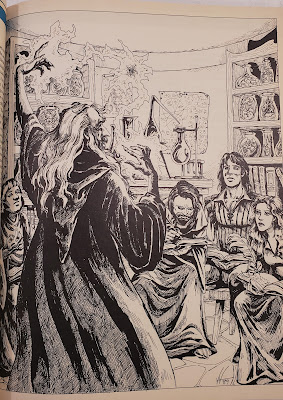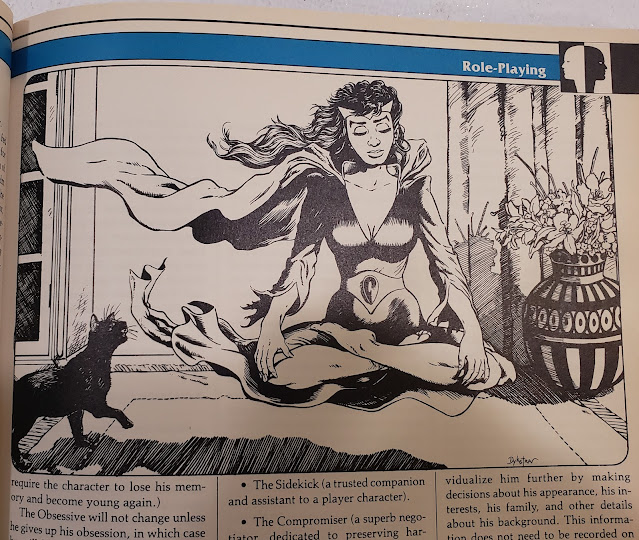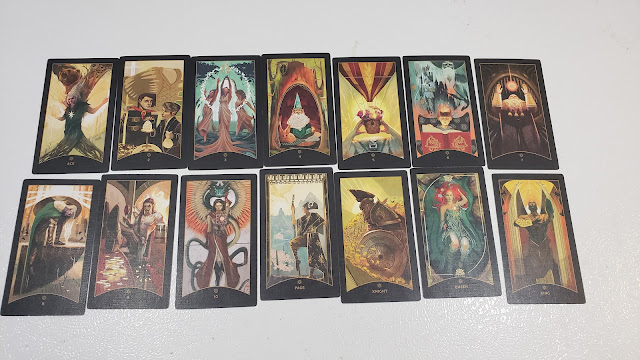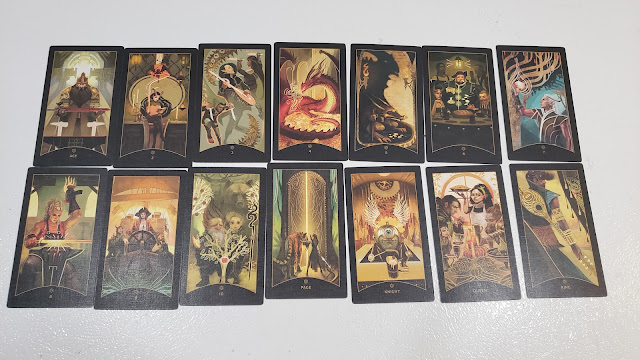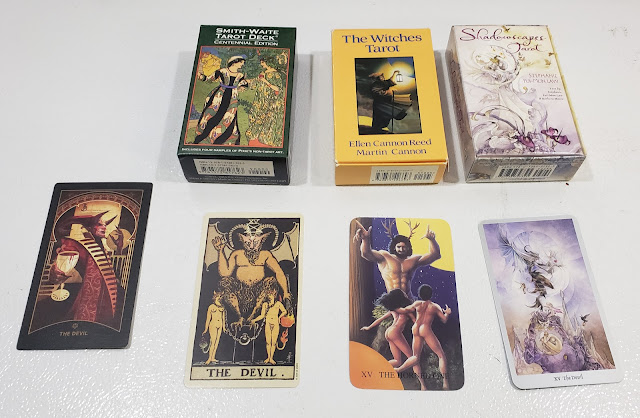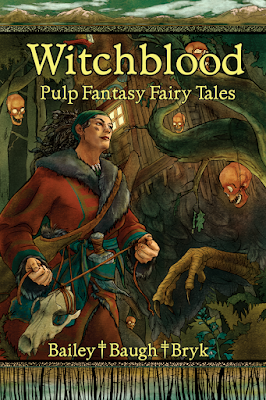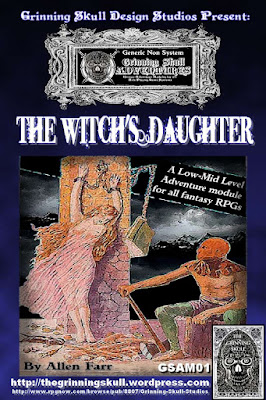I have reached the end of all the adventures I have on hand for War of the Witch Queens and before I pivot onto my next, and last series for this
#100DaysOfHalloween, I really wanted to do something special. I had not found anything perfect yet. I had about four or five different ones that I kept rotating through.
Then I was contacted by Rose Bailey. The author of the great "Die For You" RPG, which I reviewed five years ago to this date in fact. That, and what her game does makes it the perfect choice for today's #100DaysOfHalloween.
Starting today and through the rest of these till Halloween I am moving my posting to the day and exploring the topics in more detail.
Witchblood
PDF. 237 pages. Color cover, black & white interior art.
There is a hardcover option for this book, but I do not have it. Yet.
I knew this game was going to be good when I started reading it. First off the authors list Howard's Conan and Tanith Lee's "Kill the Dead." Seriously. I LOVE Kill the Dead. I love Tanith Lee. We are off to a great start. Also listed are Russian Folk Tales and Gimm's Fairy Tales. Also mentioned is Ron Edward's Sorcerer, a game I do rather enjoy.
Rules Basics
Ok we learn that this game is based on One Roll Engine. Knowledge of that game is not needed here, which is good because while I know it I have never played it.
This is a character focused game so we are going to focus on that. All characters (called Wanderers here, more on that) have Identities and Qualities. Identies come in pairs and characters have three of them. They are numbered from 0 to 5. This is a dice pool game where you will roll a number of d10 based on the Identities and one of the Qualities. So anywhere between 3 and 10 dice. Successes, Critical successes and failures are also detailed.
The Fiction
The world of Witchblood is the Forrest. A giant forest that covers an area about the size of Europe, which tech levels about late 18th early 19th century. Ok another plus for me. The game discusses how to being to create the world.the
The game is divided into this Basic Introduction, the Player's Guide, and Storyteller's Guide.
Player's Section
Chapter 1: We start here with some background setting fiction to get a feel for this world. It sets the mood and stage well. For me it already feels familiar. I have seen this world before. No. Not in print, but it is the world you see in fairy tales.
Chapter 2: Character creation follows. The characters are known as Wanderers, people who wander the world to learn more about their world and themselves. You build a character in 6 steps. 1. Name and Concept, 2. Birthright. 3. Calling. 4. Profile. 5. Bonuses. 6. Finishing touches.
Each Birthright is like your species or race. We have Changeling, Commoner, Ghostborn, Noble, Troll, Witchblood (thus the name), and Zver. Each gets two pages and helps decide your Indenties and advancement paths.
Callings are like classes or professions though they go deeper than that. They are the Balladeer, Devoted, Fortune Teller, Robber, Sellsword, Trader, and Wise One. Birthright is balanced against Calling.
Chapter 3: We get the section on Identies and Qualities. Identities as mentioned before are in pairs, Patience and Cunning, Vigor and Grace, Understanding and Persuasion. These are subdivided into two more pairs. For example Patience and Cunning also has aspects Generosity and Selfishness and Demonstration and Observation.
Points in these allow the characters to perform actions.
Chapter 4 covers these actions. The identies and qualities give you points that you then roll d10s. Roll these and look for matches or sets. So things like riding a horse in a dangerous situation would be Graceful Endurance. Just riding a horse would need no to roll. Various sorts of rule situations are covered.
Chapter 5 is the chapter on Magic. Magic here is not the organized magic of D&D. Its not even the emotional but structured magic of say Mage. Magic is, in the words of this book, bloody, blunt, and feral. There are many ways magic can manifest. There is "Petty Magic" or minor magics and anyone with a supernatural birthright can have Petty Magics. Charms are things you can pick up along the way and allow characters to do things others can't. Hunches are ways the characters can manipulate magic around them into effects. They are not something the character "does" but rather "discovers." Divination, Pacts, Lineage and Deeds, Sorcerery, Spoiling, Gifts and Shapeshifting are all magical talents that have their own means of working. The variety here is amazing and paints a picture of a world steeped in magic.
Storytelling Section
Chapter 6: This starts our Storytelling section or GMs section. It explains again that this world is largely a combination of two genres; pulp fantasy and fairy tales. This first chapter goes over the elements of these two genres and how the designers break the down the themes and rebuild them in the world of Witchblood. It is an interesting breakdown of both genres and what makes them work.
We also get some Storytelling tips. There is section on NPCs like Companions, or characters essential to the Wanderers and how they fit into the story, and Locals, or the NPCs that don't interact all the time with the Wanderers. Antagonists are those NPCs that work against the Wanderers. So exactly what they sound like. Each of these types get their motivations defined. A good guide for any game really.
Given the nature of magic in this world/game, Enchantments are the NPCs of magic. They are continuing or permanent magics. So Sleeping Beauty's sleeping curse is a good example of what this sort of thing is. They are defined more or less like other NPCs. Now this is a FANTASTIC idea.
Chapter 7: Covers "The Village" or "Where the Mild Thing Are." Ok that is a bit glib on my part. It is about where the humans live. This covers the various people living in the "Village." There are various roles like Butcher, Miller, Fisher and so on. There are also people outside the Village, like Bandits, Creeping Trees (LOVE THIS), Predators and so on.
We get themes going on in the Village, like Abuse of Authority, Domestic Violence, Human Sacfrice and more. This can be a dark game if you choose.
Chapter 8: Encounters. This covers what is in the Woods outside Village. What I love about this is everything I wanted to be here, is here; So Spirits, Ghosts, and Witches. And things I didn't like The Aunts, the Burned Man, the Dead Robbers, the Hearteater, the Mancutter and more.
This chapter is great. These encounters are so well detailed and thought out that I would love to add them to other games. Just so much flavor here.
--
This game is so rich in flavor and depth. I once said that even in D&D I don't explore dungeons, I explore characters. This is one of the better character exploration games. The Villiage, the Forest, even the Burned Man and the Mayor. They are all there for the sole purpose of exploring your character. Think about the fairy tales you know, most are named for the lead character. This is what we have here.
This game lets you do that. And to do that there is plenty of adversity here. Not just in terms of the features in the Woods but in the themes you are expected to explore. Not all of them will be comfortable or nice. It is Grimdark, but not always nihilistic. Characters work towards making things better OR at least that is their expectation. In many ways this makes things much darker than say Dungeon Crawl Classics (no slight on DCC).
This would be a great game for a group of good friends to explore. I also think it is a good game for people to use to explore different aspects of themselves. I talked about notions where the characters we make are different extensions of our own psyche. For example my Paladin character Johan is a manifestation of a Freudian Super-Ego and my Witch character Larina is a manifestation of my Jungian Anima. Just to add some armchair psychology to it. This game would do the same.
The game is fantastic and I am going to have to come back to it later this week. Maybe create a character.
There is not a ton of art (though the cover is fantastic), but I don't see this as a negative thing. Reading this reminded me of a book of fairy tales and legends I had as a kid where the only art was on the chapter pages. It invoked that same feeling in me and that is likely exactly what the designers wanted.
This not a game to do in an afternoon and be done. This one should be played a few times. I would even suggest on a regular interval; much like you read to your children before bedtime every night, this should be done at the same time in the same place. Really get that feeling you are leaving this world and move into one that sits in that liminal place between dreams and nightmares and being awake.
Can't wait to explore it more.

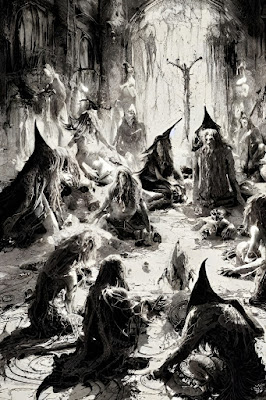
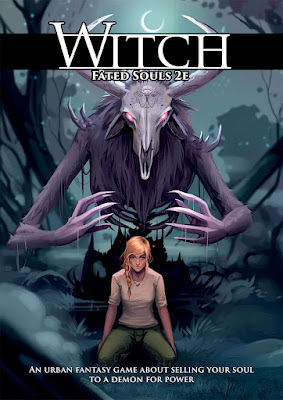
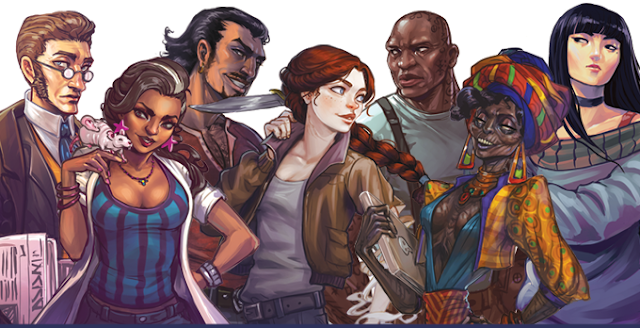


.jpg)
.jpg)

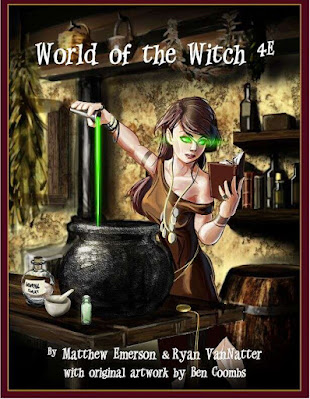
.jpg)



